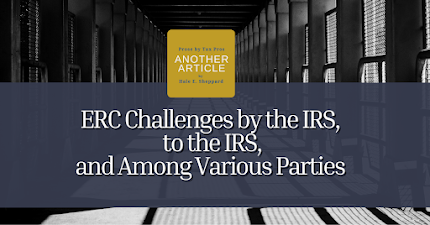ERCs and Protective Amended Income Tax Returns

Lots of taxpayers are thinking about Employee Retention Credit (“ERC”) matters these days. Most are focused on employment tax issues, but they should be considering related tax issues, too. Specifically, they might analyze how the potential reduction or elimination of ERC amounts will affect income tax returns, when such events will occur, and what should be done in the meantime. This article, another in a series by the author, explains the relevant laws, relationship between ERCs and income taxes, timing issues, and filing “protective” amended returns as a solution. Read the full article here. About Hale E. Sheppard HALE E. SHEPPARD, Esq. (B.S., M.A., J.D., LL.M., LL.M.T.) is a partner in the Tax Controversy Section of Chamberlain Hrdlicka. He defends clients in tax audits, tax appeals, and Tax Court litigation, covering both domestic and international issues.


